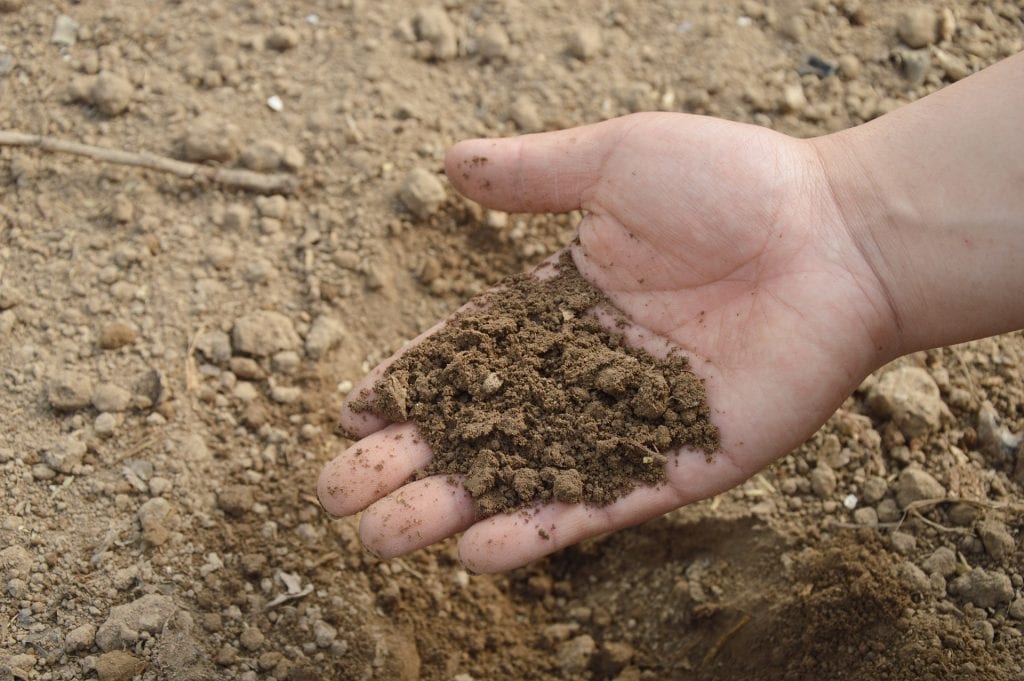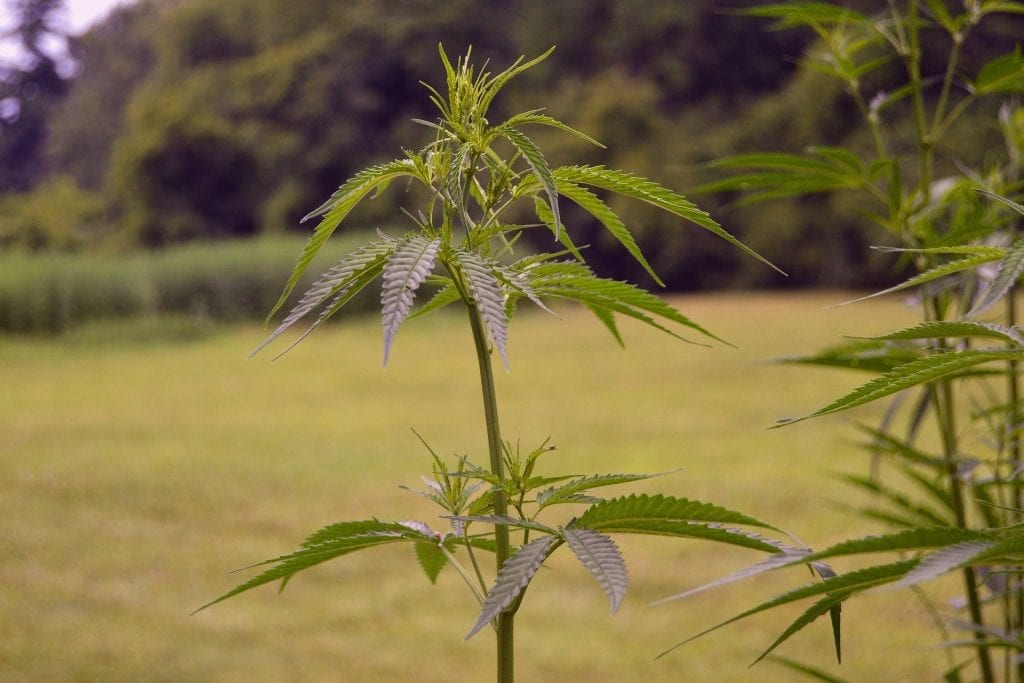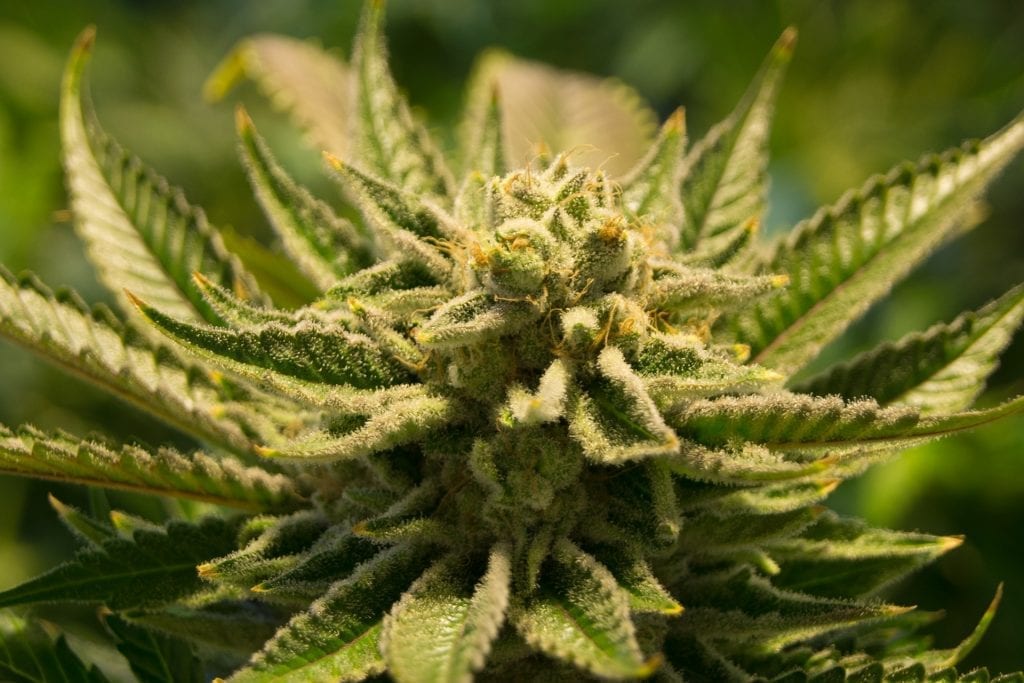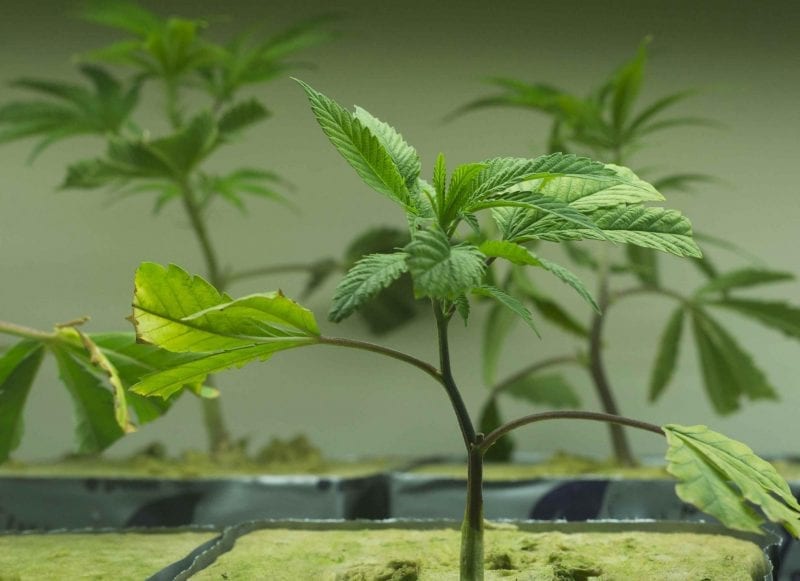If a plant has every quality that you need in your next plant, why not copy it? Even though cloning is hard, you don’t need to be a scientist to do it. Cloning is a useful skill, especially for cannabis growers. This is why every cannabis grower must know how to clone cannabis.
If you want an ample harvest of your desired weed plant, clone it. When you are cloning marijuana plants, you don’t only have the power to maintain the quality of your plants, but you can also make many new cannabis plants at once.
You can create multiple plants out of one single plant. That’s true. Our guide on how to clone weed will save you from any troubles coming your way when you are cloning weed. Ready to double your harvest for free? Let’s dive into it.
What is Cloning Weed?
Get this: Essentially, you don’t need to clone your weed plants. Plants reproduce through sexual reproduction, also known as pollination.
Then what’s so great about cloning, you may ask? Just like human reproduction, there are so many genetic possibilities in pollination. You could end up having a completely different plant from the parent plants.
Cloning cancels this randomization of genes, as it produces genetically identical plants. It is a process of asexual reproduction. In other words, cloning gives you an exact copy of the mother plant.
How? Quite simply, you place a cutting of your desired plants in the ground. Then, you take good care of it and bam. You have another similar cannabis plant. Believe it or not, if you clone two to four branches from your mother plant, you will harvest more than double your original crop.
Although marijuana cloning is not foolproof, sometimes even short cuttings produce a big harvest. Growers prefer to cut off the lower parts of the mother plant as they struggle to survive with less sunlight and water.
What are the Benefits of Cloning Weed?
You’ll be surprised to know that cloning not only makes you self sufficient, but it also saves your time and ensures a consistent crop.
These are the main benefits of cloning:
Genetically Identical Plant
Since clones share the same genes as their mother plant, they are an exact copy of that plant.
Consistent Crop
All the characteristics of marijuana that can vary in a strain are likely to stay constant in a clone. You will know how your clone will grow and what yield to expect, along with the bud color and more, because you have seen the parent plant.
Take Cuttings at Most Stages
It is preferable to take clones in the vegetation season. However, you can take a cutting at most stages in a plant’s life. You can take clones until two to three weeks before harvest.
Lots of Clones at Once
You can take many cuttings at a time to produce dozens of clones together. Before you know, your original harvest will be doubled.
Shorter Time to Yield
Unlike seeds, every clone you take is already mature. That’s why clones grow faster and are harvest-ready sooner than seedlings.
Free New Plants
In case you didn’t notice before, clones are free. You can get plenty of the plant you like, without having to look for a male plant or buy seeds. Cloning can make you self sufficient in no time.
What’s the Catch?
The only problem? Not all clones survive. Don’t be discouraged if only a few clones make it till the end. It gets better. Although clones die, they don’t impose any risks to your initial harvest.
What Do You Need When Cloning Marijuana Plants?
You don’t need a ton of equipment to start cloning. Here’s some basic stuff you will need for proper cloning. However, the list can be altered depending on your needs.
- A Mother Plant
You will need a healthy mother plant to get your clones from.
- Pruning Snip or Razor
Your pruning snips should be sterile to avoid giving too much stress to the mother plant.
- Water
Always have a water container or a water supply in your reach before cloning. Water prevents air bubbles from forming in the stem.
- Rooting Hormone
You will need a rooting gel/powder to encourage healthy plant growth.
- Rooting Medium
Prepare a rooting medium of your choice to root your clones in.
- Grow Lights
If you are cloning indoors, the right light should replicate the light of the sun.
Step by Step Guide to Cloning Cannabis
Cloning marijuana plants can sound like a tough job, but believe us when we say, it’s not rocket science. Let us make it easier for you with a step by step guide to cloning cannabis.
Picking a Parent Plant
The most critical part of cloning is to choose a mother plant with the right traits. That is because your new plants share the same characteristics as their parent plant, like gender, flowers, and growth rate.
The mother plant should be healthy and pest-free. It should be growing strong and quickly. We advise you to use an indoor plant if you are an indoor grower. For outdoor use, choose an outdoor plant to clone.
You can also select multiple mother plants and clone each of them. After the clones develop, the ultimate mother plant is selected depending on the performance of each clone.
If you are cloning for the first time, you might find it complicated to choose the best mother plant. Even so, if you are picking a female plant during its vegetative season and appears healthy, you are choosing the right plant.
The longer the clone, the better. It is preferable to take a clone from a plant that is two to three weeks into vegetative growth. That way, you can get a lot of clones from one plant.
Caring for the Mother Plant
Once you have chosen the right plant, you have to prepare it. This is how you do it:
Customize the Fertilization Schedule
Ideally, a mixture of quarter-strength vegetative fertilizer and quarter-strength blooming fertilizer should work well for your mother plant.
The fertilizer should have less nitrogen to increase the carbon to nitrogen ratio. It will allow more carbohydrates to be stored in the plant, resulting in a healthier rooted clone.
If the plant has more nitrogen, it will grow faster, but the stems will be soft with fewer carbohydrates. That will make the plants vulnerable to infections.
Remember: Your goal is to clone the healthiest growth, not the fastest growth.
Further, use a fertilizer with equal ratios of nitrogen to potassium. Excessive potassium worsens the problems related to nitrogen imbalance.
The fertilizer you are using should also contain a decent amount of calcium. Since this is not always the case, using a calcium supplement is a good idea. Calcium ensures thicker stems and stronger cell walls in plants.

In addition to base nutrients, we recommend you to enhance the fertilization with micronutrients and trace minerals. All these fertilizers will promote plant health even more.
Since every plant and its environment differs a bit, it is advised to experiment before selecting a particular fertilizing schedule for your mother plant.
Prune and Trim
Pruning and trimming the mother plant doesn’t only make it healthier, but it also doubles the branches that can later be taken as clones. When one node is removed, two new nodes will take its place.
Does cloning not include pruning the plant, you may ask? Indeed, it does. But pruning could be done before taking cuttings so that you can have more cuttings. You can even make it a regular undertaking to shape your plant and improve growth.

Pruning the top of the mother plant also prevents it from growing too large. That is because when you cut a branch from the top, the new branches sprout diagonally.
Foliar Feeding (Optional)
You can use seaweed extracts for foliar spraying the mother plant. Seaweed extracts contain cytokinins that promote cell division and keep the plant tissues young. You can combine seaweed extracts with fulvic acids. They facilitate the plant’s absorption and use of minerals.
A combination of seaweed extract and fulvic acid can be a very effective foliar spray. The seaweed extracts can stimulate plant growth, while fulvic acids will activate useful growth hormones.
Final Preparations before Cloning
Before the final cutting, check the mother plant for any nutrient deficiencies or pest infections. You might want to use a magnifying glass for this matter.
Then, place the mother plant in darkness for about 12 to 24 hours, before taking the cuttings. The plant will have the most amount of stored sugars in its resting period.
Taking a Cannabis Clone
The next step is to take a cutting from the mother plant. You can take marijuana clones at almost any point in a plant’s life. You can take cuttings from a plant, as young as two months old, to a ripened, flowering plant.
But remember this: Don’t clone plants in their second week of flowering.
If you are taking a cutting from a mature plant, take it from a shaded area so that the buds aren’t as developed as the rest of the plant.
Cloning gives the best results when it’s done in regions with long growing seasons. Still, the clones don’t reach their maximum height as they start growing later in the growing season when the mother plant is mature.
Prepare to Cut
Before you begin cloning, consider the following tips for a higher success rate.
- Select the healthiest mother plant.
- Wash your hands thoroughly.
- Sterilize your work area and tools.
- Keep your growing medium ready.
- Keep everything you need in your reach.
Take Cuttings
Select your branches from the bottom of the plant as it contains more rooting hormones. Before you cut, reflect on the place where your roots will grow. Make sure there are at least a few nodes below the top of the area you’re cutting.
Start by clipping one of the branches of the mother plant. Take your cutting at a 45-degree angle to increase the surface area for rooting. There you have it, your first clone. Easy, isn’t it?
We advise you to collect six to eight inches branches with a fair number of nodes on it. For Rockwool cutting, cut the stem to the same size as the rooting hole.
Remember: Make sure there are a few leaves on each branch, as these leaves help new nodes to sprout.
A stem with longer leaves will mean faster growth. But, cut the larger fan leaves into halves. You want your plant to focus more on its roots.
Trimming the Cannabis Clone
No leaf has to touch the growing medium, so cut any unnecessary leaves at the bottom of the clone. Trimming will help plants with water uptake and prevent leaves from touching each other too.
Growers often scrape or cut slits in the stem before putting it in the water. That way, more raw insides are exposed, increasing rooting potential.
Rooting Hormone
Now, immediately place your cutting in water. It will prevent air bubbles from getting into the stem. Air bubbles stop water from absorbing in the stem, killing the new clone.
Quick tip: Take your cuttings under lukewarm water to prevent air from getting inside the hollow stems.
After that, take your cutting out of the water and dip it into the rooting hormone. Rooting hormones encourage healthy root growth, which is the foundation of your plant. Do your research before choosing one.
Your rooting solution should be sterile. If the packaging of your rooting solution looks unsealed, or if something falls in the solution, do not use it.
Next, thinly coat the lowest node of your cutting into the rooting gel/powder. Tap off any excess solution from the cutting, so that your clone doesn’t suffocate.
Planting the Cannabis Clone
After applying the rooting hormone, place the cutting into the rooting medium.
Choosing a Rooting Medium
There are three main options to root your newly taken clones in.
Rockwool Cubes or Any Non-soil Medium Rooting
Due to Rockwool’s perfect amount of airflow and moisture retention, it provides a good environment for a clone to root in.
Soak the Rockwool cubes in water with a pH level of 5.5. Then prepare your clones for rooting by cutting, trimming, and dipping. After that, place them in the Rockwool cubes under CFL lights. Put all your cubes in a humid rooting medium with an ideal temperature.
Potting Soil
The soil used for rooting marijuana clones should not have more than the sufficient amount of nutrients. You should also make sure you are not over or under watering the soil.
After preparing your plant for rooting, stick the plant in the potting soil under CFL lights. Create a humid environment for clones to root.
Water Rooting
Rooting clones in water will save you from buying a rooting hormone. You can use plain water to start your cuttings.
First, prepare your plant for rooting. Next, take a container with a narrow neck to hold your plant and fill it with treated water. Then, simply put your cuttings in the water and stop algae from growing too much.
Keep the container away from direct sunlight until new leaves start growing. When you see some roots, it’s time to transplant. In all the discussed methods, make sure you are providing a generous amount of humidity and light to your weed clones.
Since it is harder for clones to breathe, most weed growers create a plastic dome to decrease transpiration. That way, the plants stay hydrated. To ensure a constant airflow, you can also use freezer bags to create small tents. This way, you can save them from drying under the sun.
Some growers opt for auto-cloners. These automatic cloners do most of the work for you by providing water, oxygen, and light to the clones.
Nurturing Your Cannabis Clone
Growing an indoor crop will give you control over the environmental factors affecting it, like light, water, and other nutrients.
Light
Lighting is essential for clone growth. Clones need plenty of light to root. But, they also need some hours of darkness.
Generally, clones don’t need too much light in the first few days. So, you can leave your clones in a warm, bright area say, by the window, the first two days. Then, alternate between light and dark periods. The dark periods should last for about six hours.
Grow Lights
There are four main types of lighting you can use.
LED Grow Lights
The LED grow lights are ideal for small-scale use. They are the easiest to use. Plug them in and light them at a distance from your plants to avoid light burn.
Although LEDs don’t get very hot, you still need to ensure good airflow through your growing set up.
Fluorescent Grow Lights
Fluorescent grow lights are affordable and easily available. You can use the compact bulbs in grow tents and narrow spaces. For wider production, use T5 grow lights. They work well for small plants.
Fluorescent lights don’t get too hot, so you can place them close to your plants.
Metal Halide Grow Lights
Mature plants need a high powered light like Metal Halide, an HID lamp. They come in an integrated fixture. You will need a reflector and a light ballast with MH lights.
MH lights need proper ventilation as they get hot quickly. They are preferred by professional growers.
High-Pressure Sodium Grow Lights
HPS grow lights also need reflector hoods and ventilation. MH and HPS lights both need the same fixture. These lights are must-haves for professional cloning.
Similar to MH, you need an exhaust fan for HPS lights too. They tend to get very hot.
Water and Humidity
The best thing about indoor cloning is that you don’t only control the water supply to your plants, but also the water quality. You can create an ideal environment for your clones.

Humidity Dome
Clones love moisture, especially in their first week. A humidity dome can keep your clones moist and automate the whole process. You can alternate between a dome and manual water spraying if you’re around to check.
Once you insert your clones in their growing medium, spray the clones and the dome with water. Then, place the dome on the cloning tray and provide light. The vents of the dome should be closed for the first two days.
Your clones also need some warmth in the beginning. Ideally, their environment should be a little warmer than room temperature. Growers also use a heating pad under their clones, for warmth.
Hydroponics
Hydroponics means planting your clone in an oxygenated water and nutrient solution. This method is also known as deep-water culture.
The water should contain all the nutrients you need your plant to grow in. Deep-water culture is ideal for large quantities of plants. Set up a DWC system if you want to grow weed for commercial use.
Water Spray
If you are placing your plants in a growing medium, you will need to spray your clones with water several times a day. Since the clones haven’t developed roots yet, watering the soil will be useless.
At this stage, clones absorb water through their leaves. Mix the water with a nutrient solution and spray it on the clones. Do it frequently to help your plants grow.
Nutrients
Like every other plant, marijuana clones also need nutrients for survival. The three vital nutrients for marijuana are nitrogen, phosphorus, and potassium.
Nitrogen helps your plant grow. Phosphorus boosts the growth of roots and buds. Potassium encourages photosynthesis and root growth.
Keep phosphorus and potassium medium to high throughout the vegetative and flowering seasons. You want nitrogen to be high in the vegetative season, but when the flowering season starts, switch to a blooming nutrient mix with low nitrogen.
If you are growing hydroponics, you should also add other nutrients found in the soil, like calcium, sulfur, and micronutrients.
Frequent Problems when Cloning Cannabis
Got cloning problems? Don’t worry. We’ve got solutions. Some clones are easier to manage, while others give you a hard time. Here are some problems you might face when cloning cannabis and the solutions to them.
Root Problems
Scared your clones won’t root? Don’t freak out. Some plants are self-sufficient when it comes to growing. Others, not so much. They will die on their own, but you can always help them.
Here’s how. Before cutting your clone, find the area where the roots will sprout. Then, for a week or two, keep this area in darkness by wrapping a tape around it.
This process is called etiolation. Etiolation increases the chances of a plant to grow out, often from under the soil or other plants to reach sunlight.
After that, cut your clone with a sharp pruner or a razor. Make this cut at an angle to increase the surface area for rooting.
Air Bubbles
After cutting a clone, no air should get inside the hollow stem. To prevent water bubbles from forming, immediately submerge the newly cut end in water.
Make a second cut under running lukewarm water to cancel out any possibility of air bubbles. You can also leave the cutting in the rooting hormone or water for a day or two. If you choose water, oxygenate it using an airy medium.
Suffocating Clones
Another common problem is that the clones dry out. New cuttings can’t breathe for themselves. To prevent clones from drying out, control transpiration.
There are two ways to control transpiration. One, use a humidity dome to limit water loss. Two, cut longer leaves into halves. That will decrease the surface area for evaporation.
Additionally, an anti-transpiration spray reduces water loss. It creates a barrier on the plant’s surface, keeping the water inside.
Wilting Clones
If you find your clones wilting, check if they are firmly rooted in the rooting medium. However, if they’re rooted too tightly, you may have broken the stem.
Next, check your lighting situation. To avoid light burns, tone down the lights to less intense grow lights. An anti-transpiration spray reduces wilting too.
Overwatering
If you overwater your marijuana clone, it will appear droopy. The leaves will curl down towards the growing medium. Overwatering eventually leads to plant discoloration and other serious problems.
Solution: Water your plants at defined intervals. Wait until the top of the growing medium is dry about an inch deep. Then, add water and make sure it can drain out the bottom of the pot.
You should be watering your plants every two days or so. If it takes too long to dry, you should be watering less at a time. If it’s drying too quickly, you should be watering more.
Pro Tips for Cloning Weed
Although cloning weed is getting easier with time, it is still a very delicate job. Here are some pro tips for successful cloning.
- Always keep one mother plant, at all times. You can grow new plants from them whenever you want.
- Water the mother plant well for two to three days, before taking clones.
- Water your clones with distilled water.
- Keep the leaves of each clone gently moist.
- Sterilize your hands and tools with rubbing alcohol. It will minimize the chances of infection in your clone.
- Take more cuttings than you need. That way, even if some clones die, you will still have enough left.
- If you are taking cuttings from several mother plants, label the clones. It will help you in the future.
Conclusion
If you know the basic rules and tricks for effective cannabis cloning, you will excel the art of cloning in no time. Although every marijuana plant is different, it needs a similar amount of care from the grower.
All in all, if you are planning to clone marijuana plants, start nurturing them for today. Our guide on how to clone cannabis will help you along the way. Happy cloning.
Table of contents





